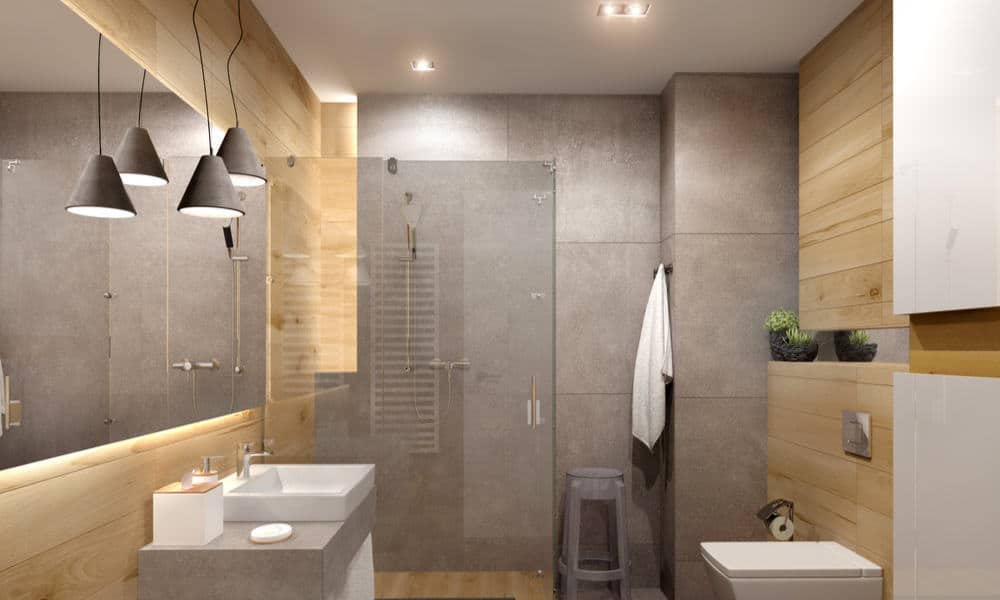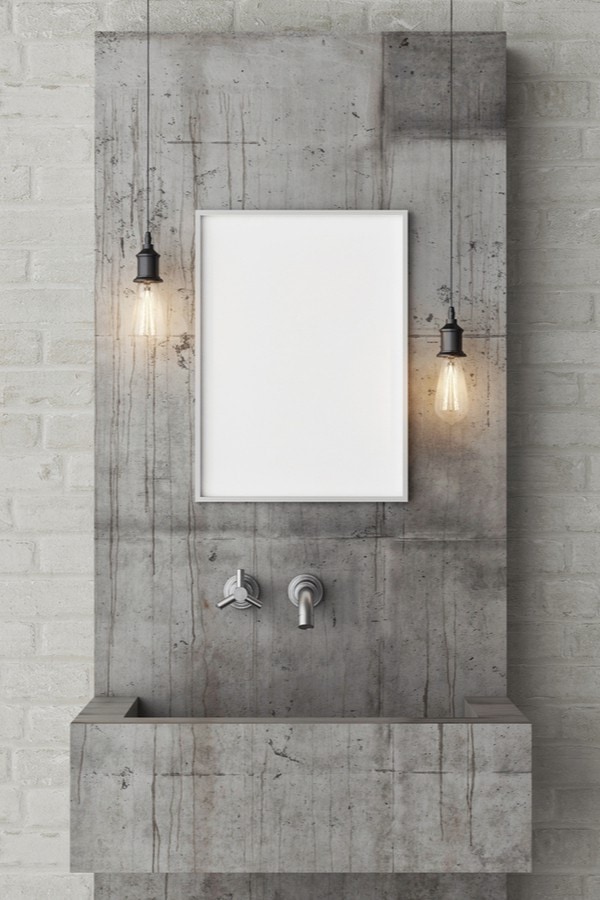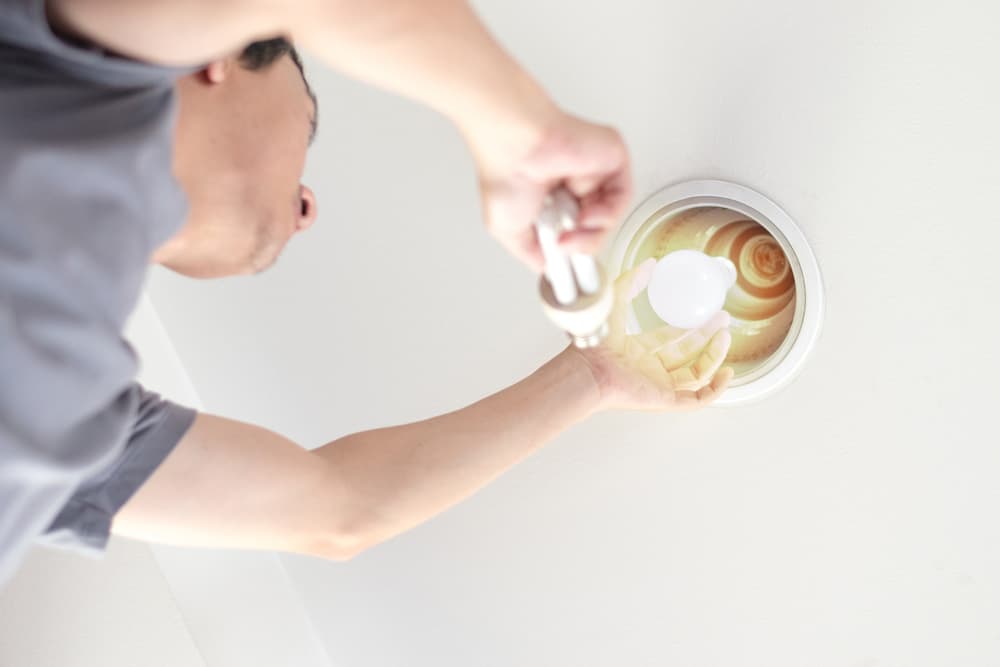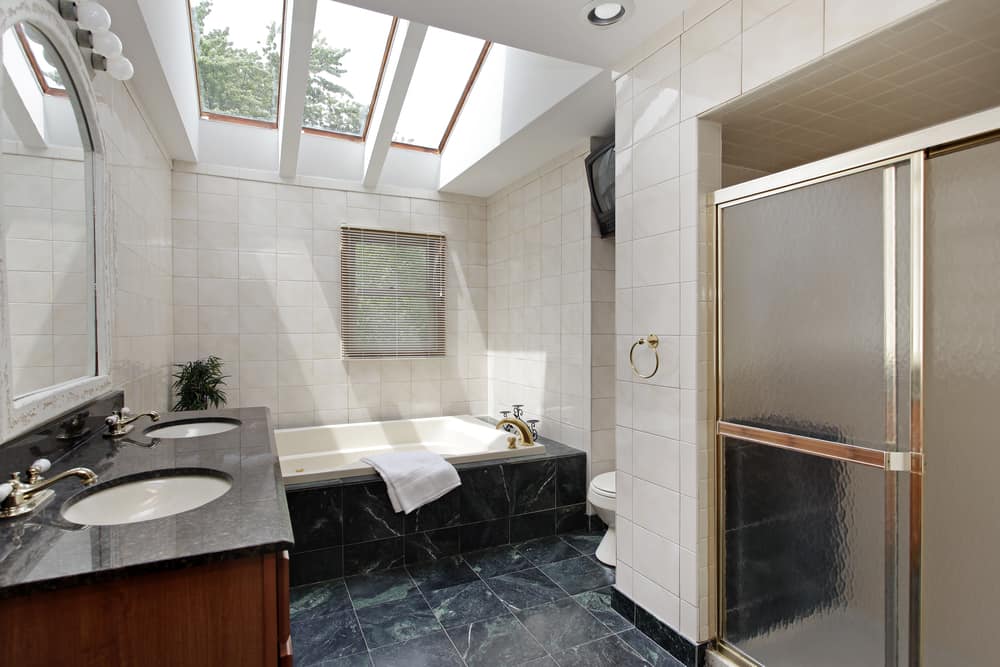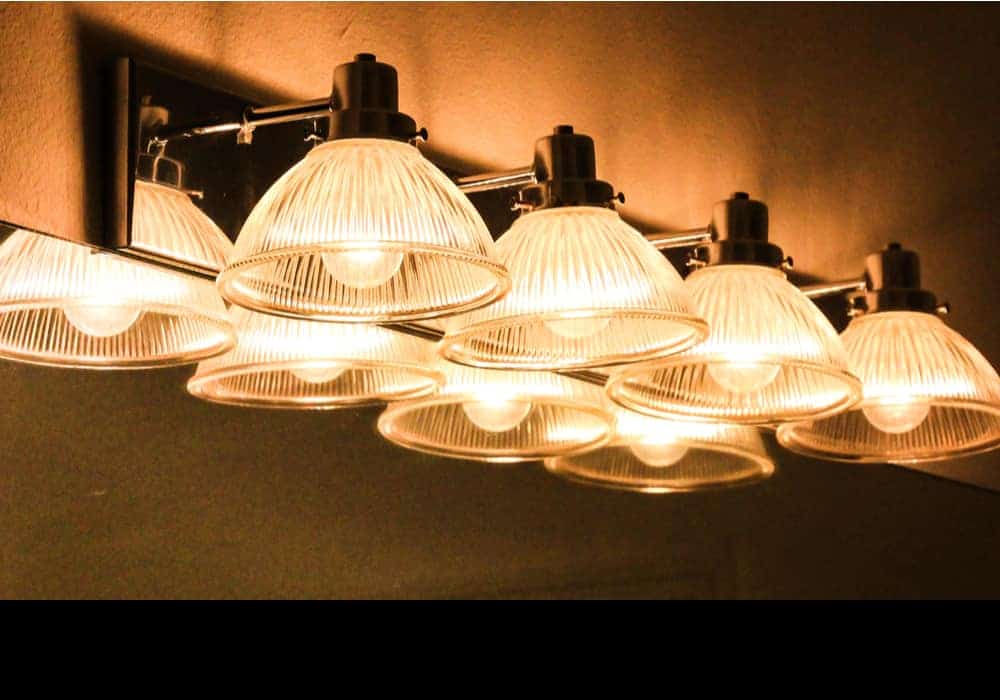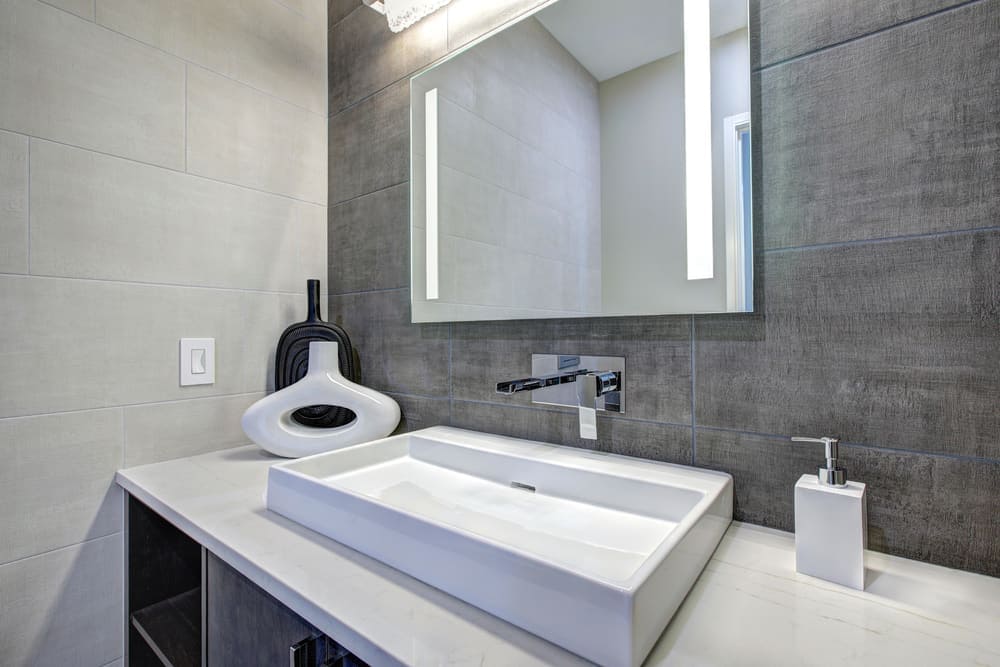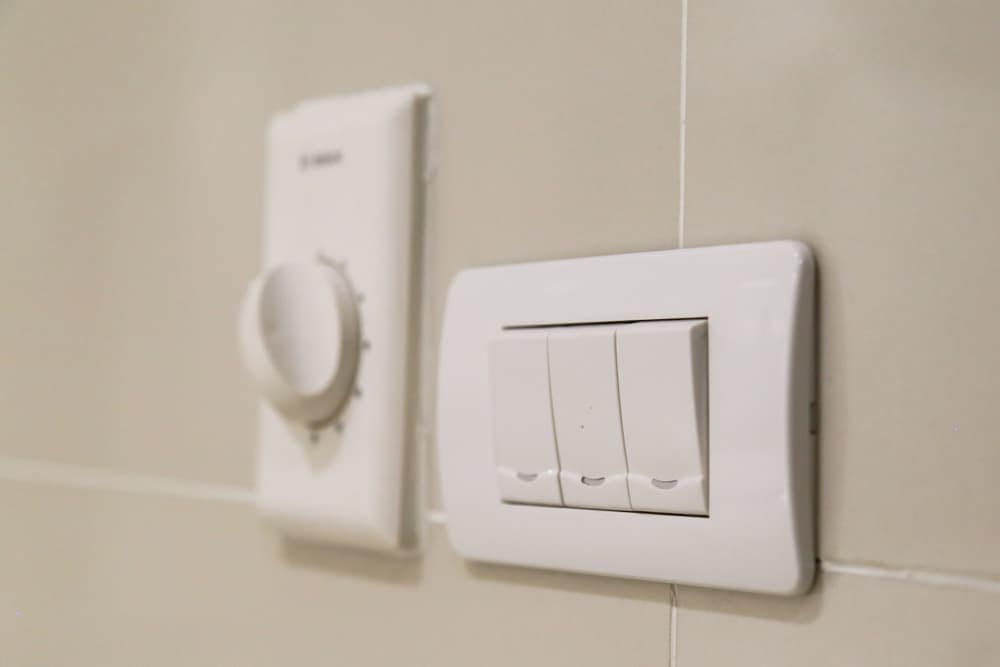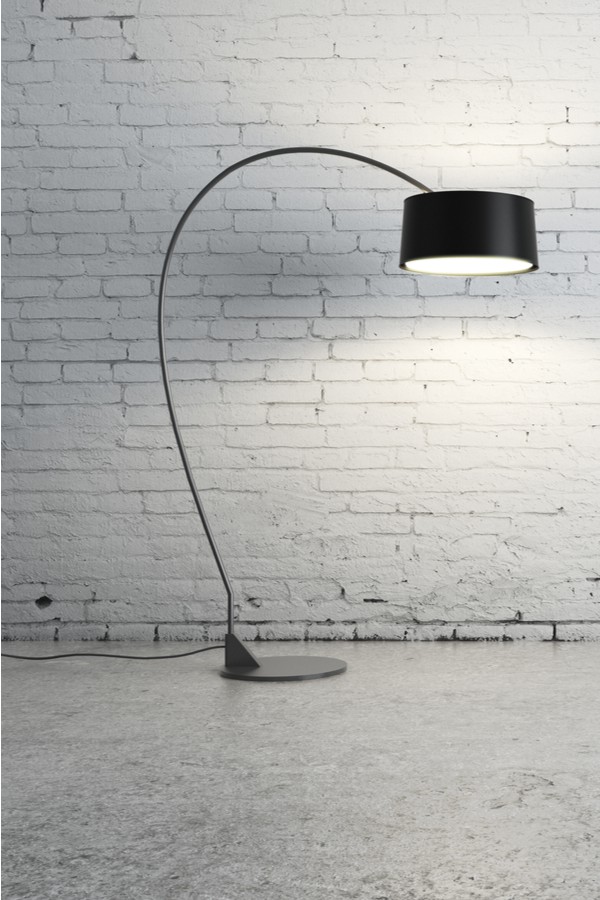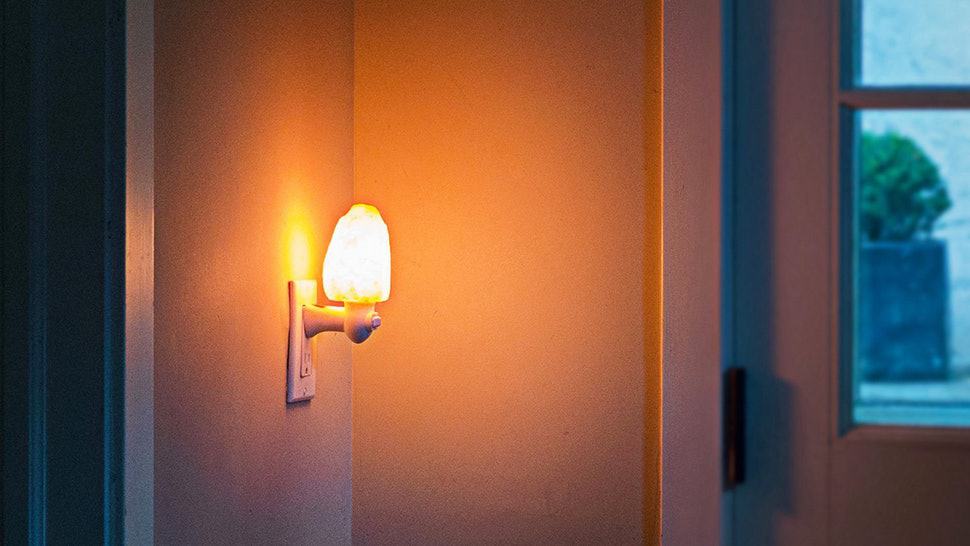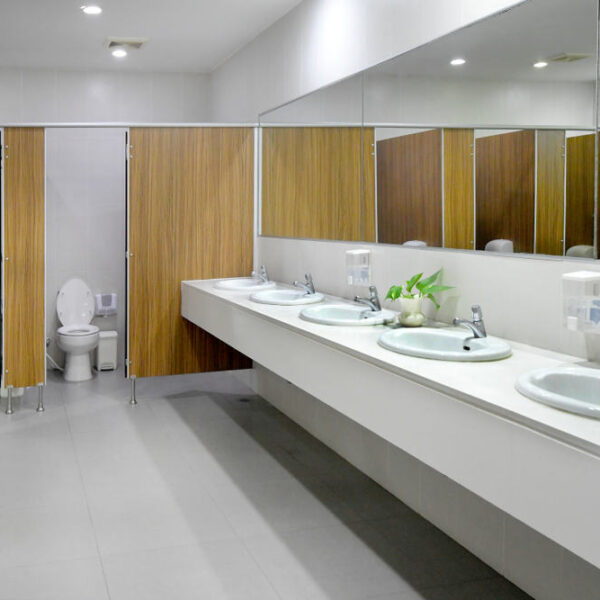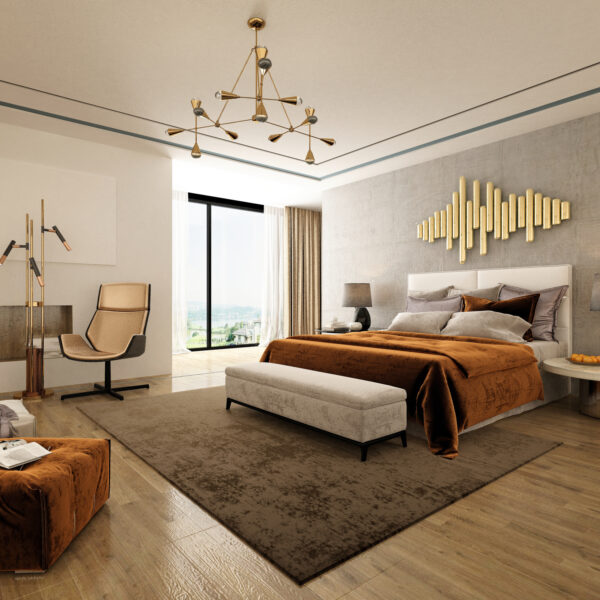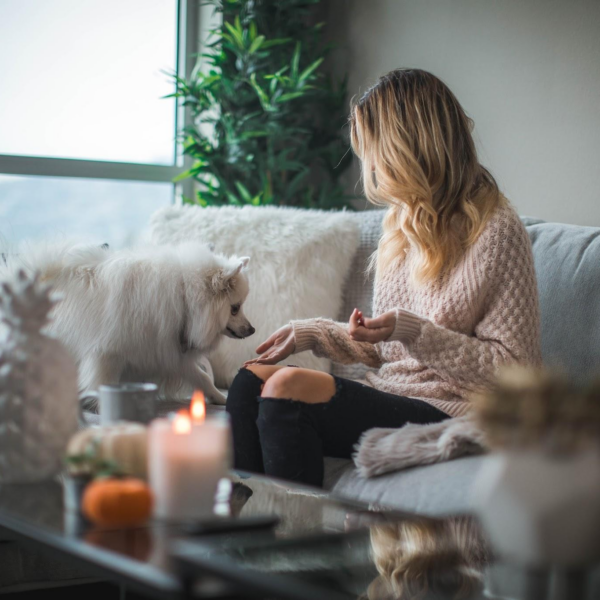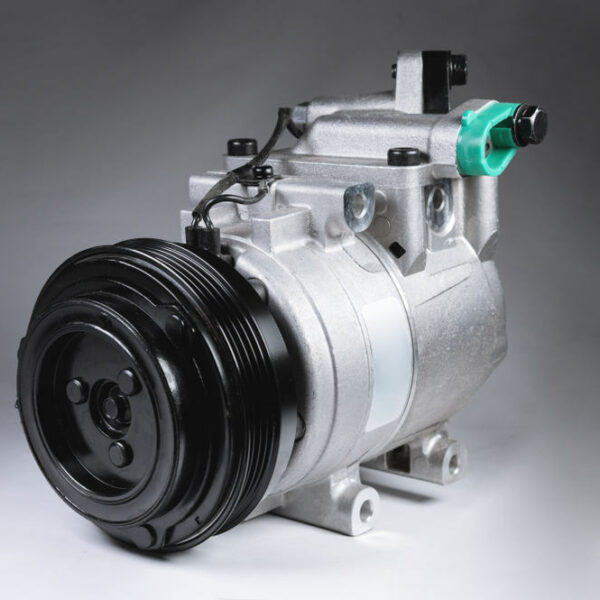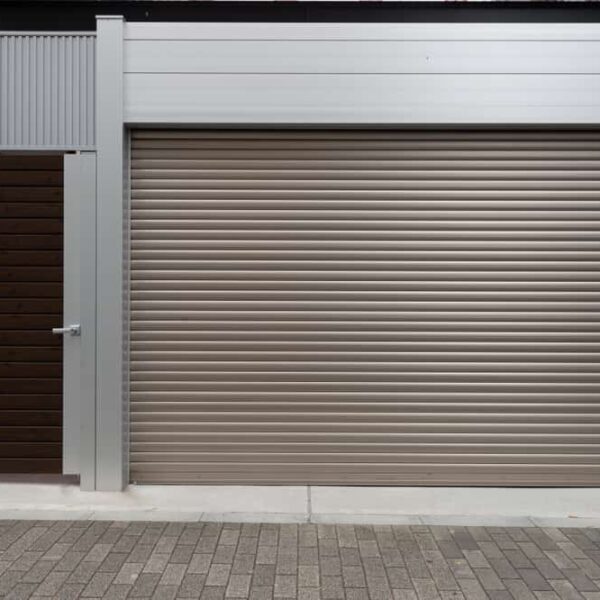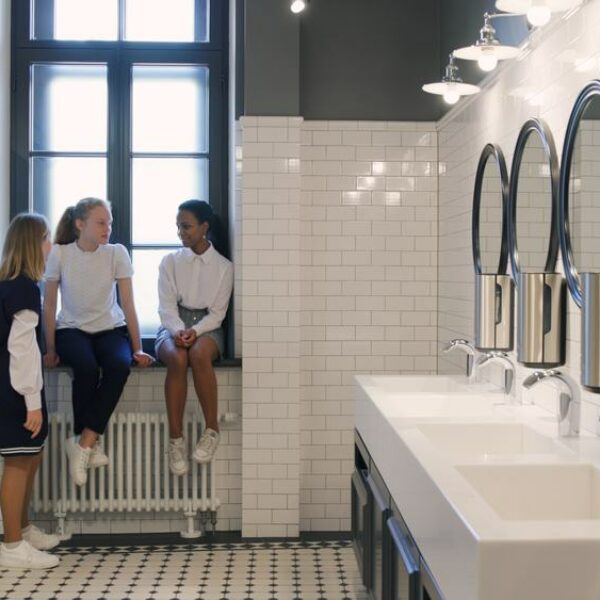When the average consumer is buying bathroom lights, they focus on aesthetics. They want to buy something that looks good. They also want it to match their bathroom’s decorative theme. Some homeowners may go a step further and consider energy, opting for power-saving bulbs.
But there are lots of other things to consider, and we’re going to look at 17 of them in this article. We’ll cover a wide range from practical to pretty. We’ll also explore waterproofing and power regulations, to give you a more wholesome view of bathroom lighting. Let’s begin!
1. Start with IP
Bathroom lights are regularly exposed to water and steam. This could rust their metallic parts, interrupt their circuitry, or breed germs. None of these situations is ideal for you. You could fall sick, get an electric shock, or lose hours cleaning your bathroom lights. So buy the right lights.
IP is a big part of this. It stands for Ingress Protection and is recognized across Europe and the US. IP ratings have two numbers – one for solids and one for liquids. Before you buy, Google IP charts for a summary of ratings. Meanwhile, here are some common examples of IP ratings:
- IP 44 is splash-proof, so it’s good for backlit mirrors.
- IP 65 is waterproof, so it works for shower enclosures.
- IP 68 is submersible, so it’s ideal for bathtubs and home spas.
Check the IP number before you any lights. And remember, if the rating saying IPX, the ‘X’ means there’s no protection for that particular feature. For example, IPX4 means wires could easily slip into your light fixture, but it’s safe from rainwater and multidirectional wind-spray.
2. Think About Bathroom Zones
In many parts of Europe, there are detailed regulations about which type of lights you can have specific parts of the bathroom. For example, lights around the bathtub and shower enclosure must be IP 44 or higher. They can withstand steam, shower sprays, and solids bigger than 1mm.
If you’d like to get a little more detailed, here’s a quick bathroom zoning guide:
- Zone 0 – inside the tub or shower, including the floor of your hot tub or shower enclosure. This area is often underwater for long periods, so you need a minimum IP of 67 or 68. The lighting should also use 12 volts or less to reduce the risk of electric shock.
- Zone 1 – Up to 2.25m above the bathroom floor. They’ll receive splash-back from the bathtub, or direct drizzles from the showerhead, but will rarely be submerged, so IP 44 is the recommended minimum, especially if you enjoy long, high-pressure showers.
- Zone 2 – 3 meters above and about half a meter outside the bathtub or shower enclosure. It also includes the half-meter radius around your bathroom sink. The main water risk here is steam and splash-back, so IP 44 is the preferred minimum.
In general, avoid buying bathroom lights that are lower than IP 44, because of all that humidity.
3. Decide on Lighting Types
There’s a lot more to bathroom lighting than bulb shapes and colors. Generally, bathroom lights could be task lights (e.g. shaving and make-up), accent lights (e.g. shelves and underwater hot tubs), or ambient lighting that covers the whole bathroom. If you can afford it, mix and match.
But if you’re on a budget, consider down-lit options. Examples are recessed lights installed within the ceiling itself. They illuminate a wider area of your walls and floors, so you won’t need extra fixtures. Plus, you could always get a smaller ‘desk-lamp’ for make-up and hair.
4. Enhance Existing Light
Many traditional bathrooms have foggy windows. The idea was to enhance privacy, so the bathroom would have tiny windows with smoked, textured, or stained glass. Contemporary homes sometimes prefer larger windows, especially if you have a corner bathtub or a nice view.
Position your lights and mirrors to reflect the window. This makes the bathroom look bigger and brighter without necessarily buying extra fixtures. Recessed lights behind the mirror are good, especially for night-time use, because they’ll reflect against the window, even in the dark.
Mirrors can maximize your artificial light as well. For example, instead of lighting two walls, place a light panel directly opposite the mirror. That instantly doubles the amount of light in your bathroom. Reflective lampshades are another clever way to multiply this effect.
5. Look to the Sky
Once you’re sold on the idea of natural light, it opens up a lot more options. In addition to large windows with clear glass, you can invest in skylights. They can be smart-glass, meaning you can dim, smoke, or tint them by remote when you want privacy. Or they can be regular PVC.
Cleverly-positioned skylights can reflect glossy floor tile, brightening your room even more. And some skylights can be used to feed a solar panel. This helps you lower utility bills while keeping your bathroom lighter and greener. Plus, you could have a soothing starlit soak in your tub!
6. Avoid Creating Shadows
Whether you’re washing up at the bar, waxing your armpits, powdering your nose, or shaving your beard, or bleaching your mustache, your mirror affects your mood. Accidental shadows could ruin your day. And yet many experts recommend placing lights above your mirror.
These overhead mirrors are the surest way to form shadows. Opt for sidelights instead. Make sure they provide the same color, produce the matching wattage, and offer the identical illumination. Install them at eye level, and add dimmers so you can use them day or night.
7. Ask Yourself ‘Watt’
As an ordinary shopper, you probably get confused about watts, volts, and amps. In terms of brightness, it’s the ‘watt’ you need to worry about. Task lights need a total of 75W to 100W. It doesn’t have to be a single bulb. You can install three to four fluorescents and LEDs.
Each of these ‘mini lights’ can be 20W to 25W. Your electrician will help you set up the wiring and positioning in a safe, shadow-free way. For low traffic guest bathrooms, you can go as low as 45W. But for en-suites in guest bedrooms, use the same wattage as main bathrooms.
8. Create Contrast for Decorative Effect
A chandelier can be combined with low-watt recessed lights. They draw the eye and fill up your space, so they’re great for high ceilings. Shape can be useful too. In a curvy bathroom, use square recessed lights and vice versa. Metallic lampshades can complement chrome faucets.
Don’t use too many decorative lights though. They’re not designed to be practical, so they don’t do much to physically light up your space. They also create extra surfaces to clean. And if you over-do them, they’ll crowd smaller bathrooms and leave you feeling claustrophobic.
9. Go Wider for your Overheads
If you do choose to follow traditional advice, you can still get lights above the mirror. By making sure the fixture is wider than the mirror, you can reduce the shadows under your eyes. Sconces on either side of the mirror are smart too. They’ll counteract the shadows from the top.
Wall-to-wall mirrors will, therefore, need wall-to-wall light fixtures. But buying a light that long could be expensive. Consider buying a series of shorter lights and combining them to get the right length. Work with your electrician to guarantee their wiring works in tandem.
10. Avoid Colored Lights Unless They’re Submersible
Mood lights are great, but you don’t want guests to leave the bathroom furious or crying. The colored light will affect their reflection in your bathroom mirror. And that could ruin their entire visit. Yours too! So stick to white or yellow lights for the bathrooms in your entertaining spaces.
But if you’re lighting a bathtub, hot tub, or home spa, the more colors the better. Invest in lights that can alternate colors or cycle through the rainbow. This helps you personalize your bathroom experience, whether you need to wind things down or heat them up.
11. Separate your Switches
Your bathroom has a lot of lighting at this point. Not to mention fans, thermostats, and other features. If your above-mirror lights are linked, they can have a single switch. But your side-sconce task lights and recessed ceiling lights should have separate switches to avoid overloading.
Separate switches also help you adjust the mood and tone of if your bathroom. You may want everything on when you’re dressing up for dinner, but only one or two sets for a romantic night in. Dimmers should have their own circuit as well. This makes them easier to control.
12. Invest in Warm Lights
The average bathroom is coated in metal, glass, and tile. And while these are easy to clean, they can also feel cold. Warm bathroom lights help you control the tone and temperature of your bathroom. Warmth comes in two variants. One, lights that mimic the bandwidth of daylight.
These lights ‘look’ like rays emitted by the sun, and have a comforting yellowish tinge. The second category is heat-releasing lights (as opposed to cold fluorescent lights). If you’re puzzled, think of the fluorescent lights at work versus the cozy lights in your car at night.
Or think of sunlight at noon versus the sunrise and sunset. Of course, you can’t always identify warm light by looking. But when you’re bathroom shopping, ask for incandescent lights as an alternative to fluorescents. They’re more relaxing and they’re great for calming your mood.
13. Think About Floor Lights
Fancy hotels and shop floors often combine ceiling lights with recessed floor lights. If under-lighting your floor panels feel too alien or invasive, set some light in your baseboards instead. In both cases, these floor-level lights will warm up the mood and help you reduce condensation.
Floor lights are a clever way to achieve a layered lighting effect. Eye-level task lights are practical while ceiling lights are ambient. Then, floor lights can line the perimeter of your bathroom. Or they can mimic the position and effect of your skylights, enveloping the whole bathroom in light.
14. Firm up your Finishes
It’s not just your faucets and glossy ceramics that catch the light. Metallic bathroom elements can brighten up your space. It could be a gilded lampshade, a few glazed tiles that are strategically placed, or shimmering soap dishes and trinket trays. It could even be a sparkly shower curtain.
Assess your bathroom from a more holistic angle and see what touches of shine you could sneak in. Could you install some stainless steel floating shelves? Can you replace your toilet flush levers or buttons with chrome? Or could you install glossy towel hoops and hanging hooks?
These are not strictly lighting tools. But anything with a reflective surface will add the light level in your bathroom. Extend this concept to your floors and countertops, choosing a light-colored, reflective tile that will push light back out into the room. Do the same for tubs and toilets.
15. Install Nighlights
They’re not just for kids and seniors. Bathroom nightlights can give your shower space a pleasant ambiance. They also serve a practical purpose. They prevent slips and falls. And they let you use the bathroom without waking the whole household. Opt for motion-activated lights.
These are ideal for grandma and grandpa, who may struggle with the lights in the middle of the night. Or for the kids trying to outsprint the darkness in the hallway. They’re also a blessing when you’re not fully awake so you can’t be bothered with switches. They save power too!
16. Settle on your Sizing
We often assume larger lights are better. If the fixture has a larger surface area, it’s sure to brighten your bathroom. But it will also cost more, both to buy and install. And it’s heavier, so you may have to reinforce the surface supporting the lights. You may need steel brackets.
That means you’ll have to tear up more of the wall, ceiling, or floor to install your lights, which takes more time and money. And yet – as any smartphone proves – tiny things can still be bright. Your fixtures shouldn’t overwhelm your bathroom, but they shouldn’t disappear either.
If the fixtures are too small and unobtrusive, your bathroom will look cold and empty. Work with interior designers or watch videos on bathroom lighting. They’ll give you ideas on the best fixture style, size, and model for small, medium, or large bathrooms. And some have seller links!
17. Work from Top to Bottom
If you’re refurbishing your bathroom, turn off your existing lights and lie flat on the floor. If you have a vivid imagination, glance at the ceiling, then along the walls, down to the floor. Think of a lighting option for every step. If you can’t make a mental picture, open YouTube on your phone.
This exercise will help you layer your lights effectively. It will also slow you down. Counting the lights in your head will tell you when you’ve got too many. And you want to do this before you spend any money or tear out any tiles. Besides, it’s fun! Just make sure the floor is clean …
Lighters up!
No, you don’t actually have to strike a match or click your pocket-sized flame device. But now that we’ve looked at lighting tips, we hope you’re in a better position to make the right lighting choices for your bathroom. We looked at various aspects, so let’s close with a quick summary:
- Ensure all the wiring is safe.
- Follow your decorative theme.
- Conserve energy when you can.
- Focus on the mood, not just the visuals.
- Obey regulations to avoid pricy fines.
What’s the lighting like in your bathroom right now? Show us some pictures in the comments!
